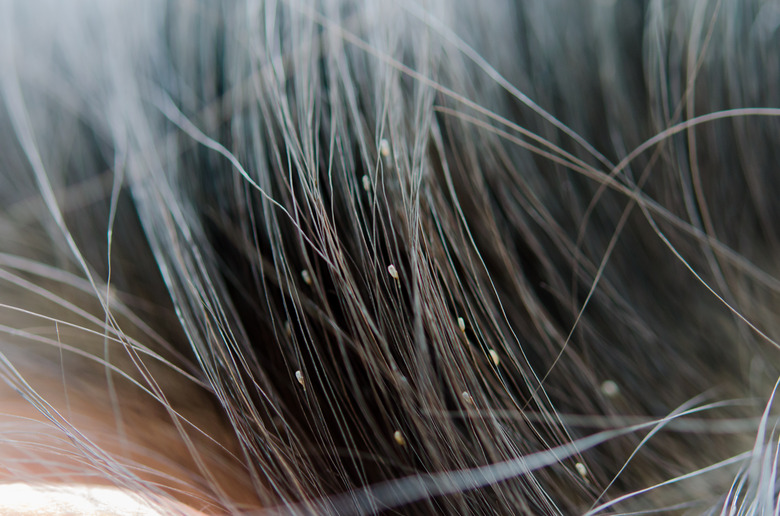What Flying Insects Live In Your Hair, Skin & Home?
A parasite is an organism that receives sustenance by preying on other organisms. Many species of insects are parasitic and prey on human blood and skin. Parasites that can temporarily survive without a host frequently reside in homes for extended periods of time before people notice their presence. There are several species of insect that live in hair, skin, carpets and homes that prey on people and can fly or jump.
Lice
Lice
Several species of louse, including the head louse, crab louse and hog louse, feed on mammals' blood. Head lice are a common childhood parasite and crab lice primarily infest the pubic hair after sexual contact. Lice can live in carpets, hairbrushes and clothing fibers for brief periods of time, but must find a host in order to survive. Typically less than one-eighth an inch in length, these tiny insects are difficult to detect. Though most lice do not fly, they can jump and travel on hair shafts. Some subspecies of lice have wings and can fly short distances.
Chigoes
Chigoes
Chigoes, members of the flea order Diptera, are approximately one-sixteenth an inch long. They live in the southern United States and can survive for brief periods of time in carpets and in homes. They prey on a variety of animals, notably humans and dogs, by burrowing into their host's skin. They are most commonly found living under toenails, between toes and on the soles of their host's feet, and where they leave painful sores. Many people being parasitized by these pests mistakenly believe they have a foot fungus or infection. Chigoes have wings that they use to help them float when jumping.
Botflies
Botflies
The botfly is a large, fuzzy gray or black fly common in most areas of the United States. Though the adults do not parasitize other animals, they lay their eggs in areas populated by warm-blooded animals. When the eggs hatch into larvae, the larvae burrow into the skin of a host to complete their development. The larvae are frequently referred to as wolf worms and can be seen under the skin of their host. After the larvae burrows out of its host's skin, it lays eggs near its host and the cycle begins again. Left untreated, wolf worm infestations frequently cause infections and allergic reactions.
Chiggers
Chiggers
Though frequently mistaken for insects, chiggers are actually arachnids that are closely related to spiders. These tiny red mites can live for extended periods of time without a host and are frequently found in tree moss, particularly in humid areas of the southeastern United States. They may also take up residence in carpet, grass and soil. They burrow under the skin of their victims, resulting in bites that are very similar to mosquito bites. Interestingly, though chiggers frequently parasitize humans, chiggers cannot survive on human blood and often die after biting people.
References
- All About Worms; All About Parasite Wolf Worm; Anne P. Mitchell
- "National Wildlife Federation Field Guide to Insects and Spiders and Related Species of North America"; Arthur Evans, Craig Tufts; 2007
- "National Audubon Society Field Guide to North American Reptiles and Amphibians"; National Audubon Society; 1979
Cite This Article
MLA
Davis, Brenna. "What Flying Insects Live In Your Hair, Skin & Home?" sciencing.com, https://www.sciencing.com/insects-hair-skin-home-fly-8776098/. 13 March 2018.
APA
Davis, Brenna. (2018, March 13). What Flying Insects Live In Your Hair, Skin & Home?. sciencing.com. Retrieved from https://www.sciencing.com/insects-hair-skin-home-fly-8776098/
Chicago
Davis, Brenna. What Flying Insects Live In Your Hair, Skin & Home? last modified March 24, 2022. https://www.sciencing.com/insects-hair-skin-home-fly-8776098/
